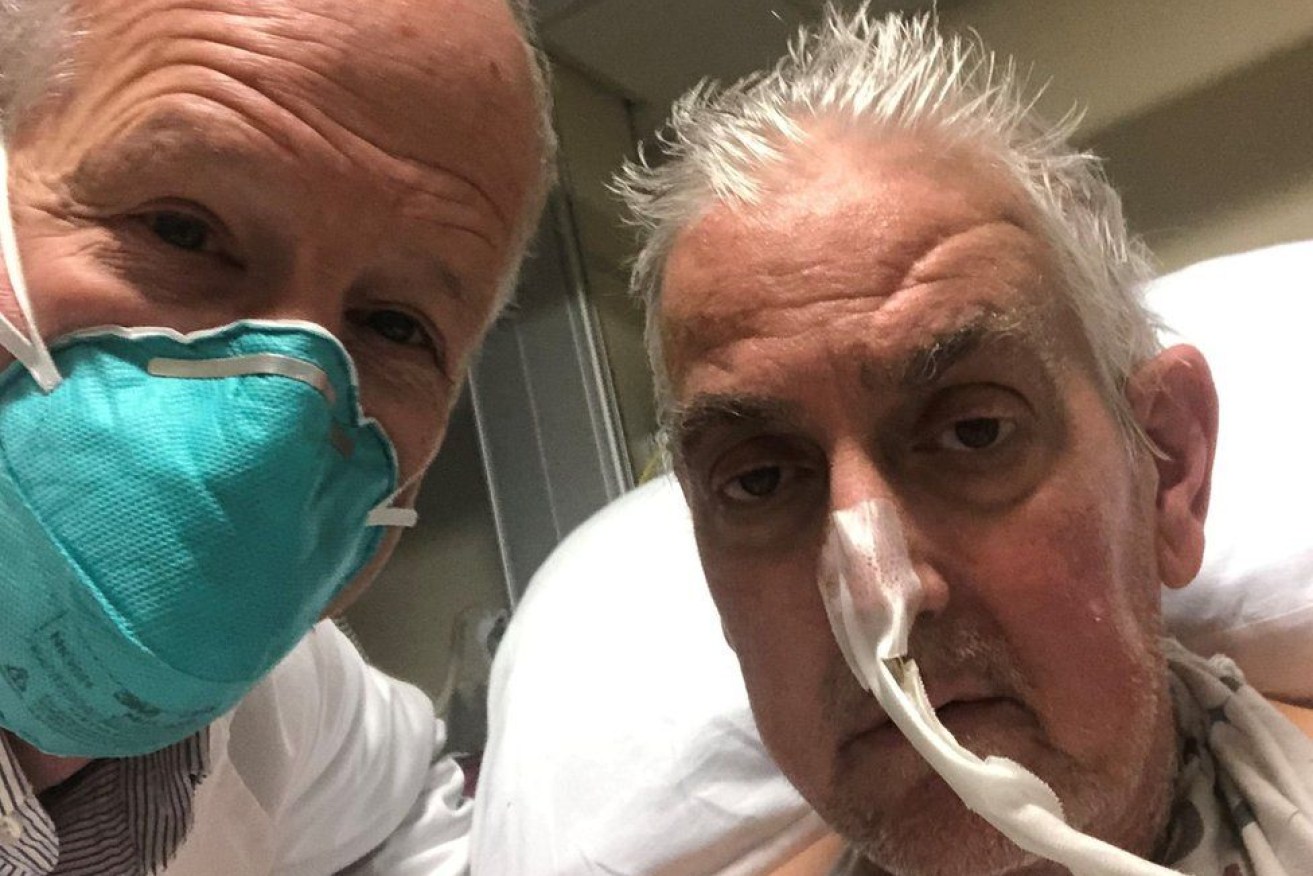World first: Desperate patient bets his life on a genetically-modified pig’s heart


Surgeon Bartley P. Griffith and patient David Bennett. Photo: University of Maryland
While the rest of the world was astounded by news that a dying man had successfully received an “historic” transplant of a genetically-modified pig heart, the patient himself was underwhelmed.
The first words from David Bennett, 57, upon waking, were: “I can’t stand this.”
His son, David Bennett Jr, however, was suitably impressed:
“This is significant for my dad, for the United States, for the world,” he said.
“This is groundbreaking, this is remarkable and, frankly, this is a miracle.”
Mr Bennett Snr might be griping, but he’s continuing to live a life that was otherwise beyond saving. In the last stages of terminal heart disease, he’d been ruled ineligible to receive a human heart.
The only reason he’s not dead is that doctors at the University of Maryland Medical Center in Baltimore were granted a special dispensation from the FDA to carry out the marathon procedure.
“It was either die or do this transplant. I want to live. I know it’s a shot in the dark, but it’s my last choice,” said Mr Bennett, in a prepared statement, a day before the surgery was conducted.
He had been hospitalised and bedridden for some months.
“I look forward to getting out of bed after I recover.”
As of January 13, he’d survived for a week so far
Since the transplant, Mr Bennett had been connected to a heart-lung machine to support the new heart. He’s since been taken off the machine, and the pig heart is working independently.
Forty years in the making
This organ transplant demonstrated for the first time that a genetically-modified animal heart “can function like a human heart without immediate rejection by the body”.
It’s a breakthrough that will eventually revolutionise the transplant sector, which is endlessly bedevilled by long waiting lists and too few available, healthy organs.
Already a debate has broken out over the ethics of pig heart transplants, but nothing can take away from scale of this achievement.
Transplanting animal organs, known as xenotransplantation, was first tried in the 1980s. The most famous case was that of the infant Stephanie Fae Beauclair, known as ‘Baby Fae’.
The child, born with a fatal heart condition, received a baboon heart but died within a month when her immune system rejected the foreign heart.

Dr Muhammad M Mohiuddin placing the pig’s heart in storage container.
The high emotions surrounding the failed attempt were partly why full xenotransplantation was effectively abandoned – although for many years pig heart valves have successfully replaced failing valves in humans.
This may be why some people tend to the mistaken belief that pig-heart transplants have already been accomplished.
Six weeks before the surgery, Mr Bennett was admitted to the hospital with life-threatening arrhythmia and connected to a heart-lung bypass machine, a process called extracorporeal membrane oxygenation.
In addition to not qualifying to be on the transplant list, Mr Bennett was deemed ineligible for an artificial heart pump because of his arrhythmia.
He agreed to the surgery after the considerable risks were explained to him.
The surgeons used a new drug along with conventional anti-rejection drugs, which are designed to suppress the immune system and prevent the body from rejecting the foreign organ.
Genetic editing made the difference
Previous attempts to transplant pig organs into humans have failed because of genetic differences that caused organ rejection or viruses that posed an infection risk.
In preparation for the Maryland surgery, three genes – responsible for rapid antibody-mediated rejection of pig organs by humans – were neutralised in the donor pig.
Six human genes responsible for immune acceptance of the pig heart were inserted into the genome.
Also neutralised was a pig gene that would have caused excessive growth of the pig heart’s tissue.
Dr Mohan Suntha, president and CEO of the University of Maryland Medical System, said:
“We appreciate the tremendous courage of this live recipient, who has made an extraordinary decision to participate in this groundbreaking procedure to not only potentially extend his own life, but also for the future benefit of others.”
The surgery was led by Dr Bartley P. Griffith, a distinguished professor at the Maryland School of Medicine. He worked in partnership with Dr Muhammad M. Mohiuddin, Professor of Surgery at the school, and co-founder of the Cardiac Xenotransplantation Program with Dr Griffith.
There is an age-restricted video of the surgery to be found here.
Six days after the surgery, it was revealed that Mr Bennett in 1988 went to prison for stabbing a man seven times. He’d apparently led a trouble-free life since being paroled, save for his failed heart.








